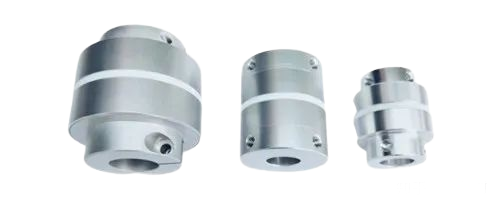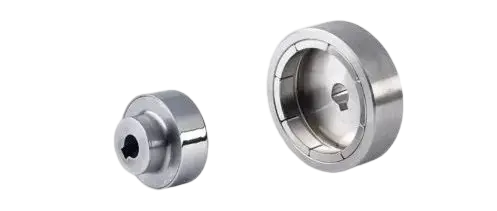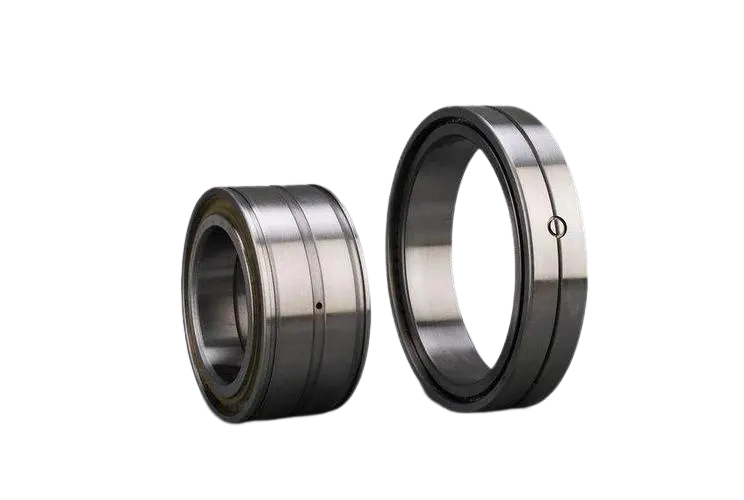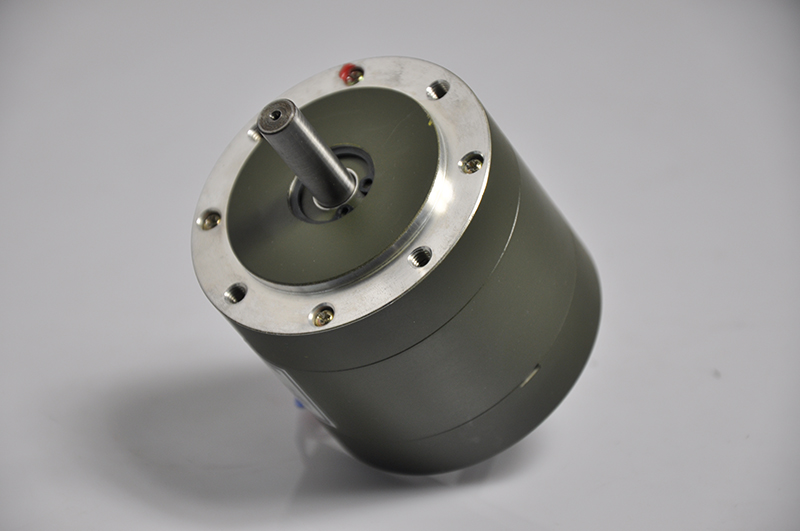advantages of NdFeB magnets in magnetic couplings
Permanent magnet coupling is a new type of coupling that utilizes the magnetic coupling between permanent magnets to connect the prime mover and the working machine. Compared to traditional couplings, it does not require direct mechanical connection, but utilizes the magnetic field to penetrate a certain spatial distance and the characteristics of material materials, achieving the transmission of mechanical energy between the main and secondary shafts.
The emergence of permanent magnet couplings has overturned the structural form of traditional couplings. It adopts a new magnetic coupling principle, which enables the transmission of force and torque between the active and driven shafts without direct contact. At the same time, it can also transform the dynamic seal into a static seal, achieving zero leakage. These characteristics make permanent magnet couplings widely used in sealing transmission machinery in industries such as chemical engineering, electroplating, papermaking, pharmaceuticals, food, vacuum, etc.
Common magnetic drive types include synchronous drive (planar and coaxial), hysteresis drive, and eddy current drive, which are applied in different fields due to their respective characteristics.

The structure of a planar magnetic coupling is simple and reliable, consisting of two discs of the same diameter. These two discs are usually made of materials such as steel or aluminum alloy, and magnets are installed at the edges of the discs in an NS pole crossing manner. When in use, two discs are installed separately on the driving and driven shafts, and this type of coupling usually has an intermediate air gap to maintain a certain distance between the shafts.
The principle of this magnetic coupling is to utilize the mutual attraction and repulsion of permanent magnets. When the N pole of magnet A faces the S pole of magnet B, the two disks will start to rotate, and vice versa. In this way, within a certain torque range, the driven shaft and the driving shaft maintain synchronous rotation. And in the process of transferring kinetic energy, the size of the air gap directly affects the output of torque. The smaller the air gap, the greater the torque.
Compared to other types of magnetic couplings, the biggest advantage of planar magnetic couplings is that they do not require high-precision machining processes and complex installation requirements. Meanwhile, in most applications, permanent magnetic couplings are usually more reliable and durable than mechanical transmissions or other types of couplings. However, due to the fact that the torque transmitted is proportional to the area of the disc, the torque of this magnetic coupling cannot be too large, otherwise it will cause excessive size and installation difficulties.

The widespread application of coaxial magnetic couplings is mainly due to their high accuracy, durability, and reliability. The coaxial magnetic coupling is not only simple in structure, but also has excellent magnetic coupling performance, which can avoid contact loss and friction noise problems in mechanical coupling transmission, and reduce the cost of equipment maintenance and repair.
The magnetic coupling has a wide speed range and can reach higher speeds, making it suitable for high-speed transmission situations, especially in oil-free lubrication and high-temperature environments. At the same time, the design of coaxial magnetic couplings also fully considers environmental factors and can cope with special working conditions such as corrosive liquids, making them widely used in industries such as chemical, medical, and food.
The coaxial magnetic coupling also has the characteristics of fast response and high transmission efficiency, making it widely used in situations that require efficient transmission and energy conservation and environmental protection. Overall, coaxial magnetic couplings are a widely used, efficient, and durable synchronous transmission equipment.

NdFeB magnets play a critical role in magnetic bearings as they provide the necessary force to support the rotor in the bearing without any physical contact. The magnets work by creating a powerful magnetic field that keeps the rotor in place. This design eliminates the need for traditional ball or roller bearings, which experience wear and tear over time.
The magnetic field generated by NdFeB magnets is also stable and reliable, even at high speeds. This stability reduces the amount of vibration and noise produced by the machine, resulting in a smoother operation.
There are several benefits of using NdFeB magnets in magnetic bearings, including:
High Magnetic Strength
One of the most significant advantages of NdFeB magnets is their high magnetic strength. They produce a very strong magnetic field that can hold the rotor in place, even at high speeds. This property makes them ideal for use in applications where there is a need for stable, high-speed rotation.
Low Friction
NdFeB magnets have low friction compared to traditional ball or roller bearings. The lack of physical contact means that there is no need for lubrication, reducing maintenance requirements and increasing the longevity of the machine.
High-Temperature Resistance
NdFeB magnets are known for their high-temperature resistance. They can operate at temperatures up to 200℃, making them ideal for use in industrial applications where high heat is common.
Longevity
Due to their high magnetic strength and low friction properties, NdFeB magnets have a long life expectancy. They can remain stable for decades without losing their magnetic properties, making them an ideal choice for critical applications where downtime is not an option.

Neodymium iron boron magnets are used in permanent magnet motors. Common permanent magnet motors include permanent magnet DC motors and permanent magnet AC motors.
Permanent magnet DC motors: Brushed DC motors, brushless motors, stepper motors, etc.
Permanent magnet AC motors: Synchronous permanent magnet motors, permanent magnet servo motors, etc., can also be divided into permanent magnet linear motors and permanent magnet rotary motors according to their motion mode.
Due to the excellent magnetic properties of rare earth permanent magnet materials, a permanent magnetic field can be established without any additional energy after magnetization. Rare earth permanent magnet motors made by replacing the traditional electric field of motors not only have high efficiency, but also have simple structure, reliable operation, small volume, and light weight. It can not only achieve high performance that traditional electric excitation motors cannot match (such as ultra-high efficiency, ultra-high speed, ultra-high response speed), but also meet the specific operating requirements of special motors, such as elevator traction motors, automotive motors, etc. The combination of rare earth permanent magnet motors, power electronics technology, and microcomputer control technology has improved the performance of magnetic rotors and transmission systems to a new level. Therefore, improving the performance and level of supporting technical equipment is an important development direction for the automotive industry to adjust its industrial structure.
Rare earth permanent magnet motors are widely used in almost all fields of aviation, aerospace, national defense, equipment manufacturing, industrial and agricultural production, and daily life. It includes permanent magnet synchronous motors, permanent magnet generators, DC motors, AC permanent magnet servo motors, permanent magnet linear motors, special permanent magnet motors, and related control systems, almost covering the entire motor industry. The mechanism and principle of rare earth permanent magnet synchronous motor The structure of rare earth permanent magnet synchronous motor mainly consists of rotor, end cover, stator, etc. Generally speaking, the stator structure of permanent magnet synchronous motor is very similar to that of ordinary induction motor, but the unique structure of rotor is mainly different from other motors.
Contact: Cindy Wang
Phone: +86 19916725892
Tel: 0512-55128901
Email: [email protected]
Add: No.6 Huxiang Road, Kunshan development Zone, JiangsuShanghai Branch: No. 398 Guiyang Rd, Yangpu District, Shanghai, China